B&B Blue Dolphin (Alghero)
The Bed & Breakfast Blue Dolphin is ten minute walk from the historic center of Alghero and the main city beaches and pinewood Maria Pia’s Lido.
The B&B, completely renovated in 2012, furnished with great taste and style, offers three comfortable rooms all with private bathroom, heating and air conditioning. The B&B is a comfortable and convenient reference point to spend some time relaxing in the charming area of Alghero. We have the breakfast togheter in my living room in winter or in terrace in summer, from 8:30 a.m. to 10:00 a.m.
Near the B&B there are bars, pizzerias, supermarkets and even a spa.
Among the services included in the price, in addition to breakfast, the supply of linens for the bedroom (sheets, blankets), towels, hair dryer, shampoo and bath foam.
Bed & Breakfast Blue Dolphin, via Marconi 75, 07041 Alghero (SS)
Tel. +39.346.0333533 (Roberto)
Visit the website (www.bluedolphinalghero.com)
The Nuraghe of Palmavera
Along the coastal road 127 Bis which connects Alghero to Capo Caccia, three and a half kilometres after Fertilia (at kilometre 32), we find the magnificent Nuragic complex of Palmavera. The main keep dates back to the Fifteenth-Fourteenth century B.C., and can be still visited in all its parts; including the large central room with a tholos cupola. Considered the structure of the complex, which was built at the foot of the Doglia Mountain, archaeologists presume that it was surrounded by cabins and refuges. The second cycle of life of the Nuraghe, started after the first half of the Ninth century B.C., when a second keep was added and the first one was covered with blocks of sandstone, a very common material in this area.
The visit is organized between the two towers, and it is also possible to visit the meeting cabin, where there are still a stone bench, a bath and the throne of the tribal chief. During the excavations, archaeologists found several artifacts, which today are mainly exhibited at the National Archaeological Museum “Sanna” in Sassari (at 64, via Roma; Phone nr. 0038.079.272203 – www.museosannasassari.it).
The Cave of Neptune (Grotta di Nettuno)
It is one of the most stunning places easily reachable by visitors and was discovered by chance by a local fisherman in the Eighteenth century. It is accessible both by sea (departures from the port of Alghero or from the boarding pier of Cala Dragunara, just after the enchanting Tramariglio bay), and by land, through the Escala del Cabirol (Stairs of Roebuck), with its 656 steps running along the cliff, and rising up from the sea, just in front of the Isola Foradada (Foradada Island). The inside is breathtaking and the tourist route winds its way through several rooms, with each one presenting different features: the Lamarmora Lake, an underground salt lake which is 9 metres deep, 100 metres long, and 25 metres wide; with a stalagmite column named Acquasantiera (Stoop) at its center. Another stalagmite rises from the bed of the lake and is called Albero di Natale (Christmas Tree). There are also the rooms of the Reggia (Palace), of the Rovine (Ruins), of the Organo (Organ), of Trine e Merletti (Lace and Lacemaking) and of the Tribuna della Musica (Tribune of the Music), which dominate the room of the Reggia (Palace).
The service of guided visit is available all year long. Visits to the site are possible from Easter to October, from 8 a.m. to 8 p.m. To reach the cave by land, once arrived at the square in Capo Caccia, just read all information on the visit procedures provided on the dedicated wallboard. Instead, to reach the cave by sea, take the motor ship which sails from the port in Alghero.
Further information are available at the tourist office in Alghero (tel. 0039.079.979054).
The Green cave (Grotta Verde)
It is the second most important cave after Neptune, and is located on the eastern side of Capo Caccia. The scenic and huge entrance is at an altitude of around 80 metres; the entire cave is very interesting from a geological, naturalistic and archaeological standpoint, since in the prehistoric age —it is estimated at least 7000 years ago—the cave was already populated by hominids looking for a shelter. On the walls, graffiti and undisputed signs of a human presence are still recognizable; drawings that many still consider shrouded in mystery, and which remain without explication. The natural light which penetrates into the wide entrance hall, allows for the growth of green mosses and lichens on the rocks. This is the feature that gave name to this place.
Imposing stalagmites, which are at least twenty metres high, are clearly visible, and continuing along towards the end of the cave, you reach the underwater part of it, where cave-divers discovered human remains, traces of ancient graves and even Neolithic vases.
The Grotta Verde (the Green Cave) was renamed as “cave of the altar”, because sailors built a small altar inside it dedicated to Saint Erasmo, their patron, back in the Fifteenth century.
Tunnel del Cabirol (the Tunnel of the Roebuck)
It is a suggestive tunnel which takes its name from the Scalinata del Cabirol (the Steps of the Roebuck) –located right above the diving point– and leading to the famous Grotta di Nettuno (the Cave of Neptune). The tunnel’s entrance is very wide and rays of sunlight penetrate inside, creating spectacular plays of light. The cave is wedged into the cliff, and extends for about fifty metres, after which you enter another smaller cave, which is located right above the bigger one. Exiting out of the cave, you continue the dive along the outer wall of the headland, which is very rich in ravines and burrows.
Departure: the cave is 8 minutes away from th ArchiMete tourist centre by rubber boat.
Route: the cave in on two levels and the exploration is quite easy.
Depth: the cave entrance is at 16 metres depths, once you have arrived at the outer wall, you can reach the seabed at 30 metres.
To see: colorful walls, covered by sponges and corals, disclose ravines where spin lobsters, moray eels, but also nudibranches and shrimps find shelter. Just outside the tunnel, it is easy to spot big pelagic fishes and sea breams hunting their quarry.
Length of the exploration: 1 hour
Price includes: scuba tank and ballast, transfer by rubber boat, diving and naturalistic guide inside the cave, washing and storage of the equipment.
Further information: the tourist centre ArchiMete offers the possibility to buy cheap diving packages, which allow one to experience the wonders of the Protected Marine Area of Capo Caccia-Isola Piana. The offer can be combined with trekking and snorkeling routes, in addition to naturalistic activities proposed by ArchiMete. See also the section “Discover our offers” on the homepage of the website.
Diving courses
.
Click on the image or here to enter the gallery
.
The sport center ArchiMete organizes all year round scuba diving courses for all ages and all skill levels. The courses are held by qualified scuba instructors from Overing Diving Center, diving center that operates in partnership with ArchiMete, and are divided into a theoretical part and a practical part.
The first aim of all the courses is to provide the diver with the necessary tools to live in a safe the experience of scuba diving.
A sport that embodies the fun, freedom and the very close relationship with the sea and with nature.
For information about diving courses, please send an e-mail to the following e-mail address: archimete@archimete.it, and specify “Info on diving courses” in the subject.
Or, you can directly call the following phone nr. +39.333.6744889 (Sandro) – +39.334.9372278 (opening hours: 9 – 1 p.m. / 2 – 7 p.m.)
Please, before read our privacy policy
.

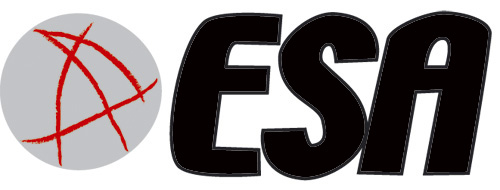
.
.
.
.
CLICK HERE AND WATCH THE VIDEO!
.
.
***********DIVING COURSES ***********
.
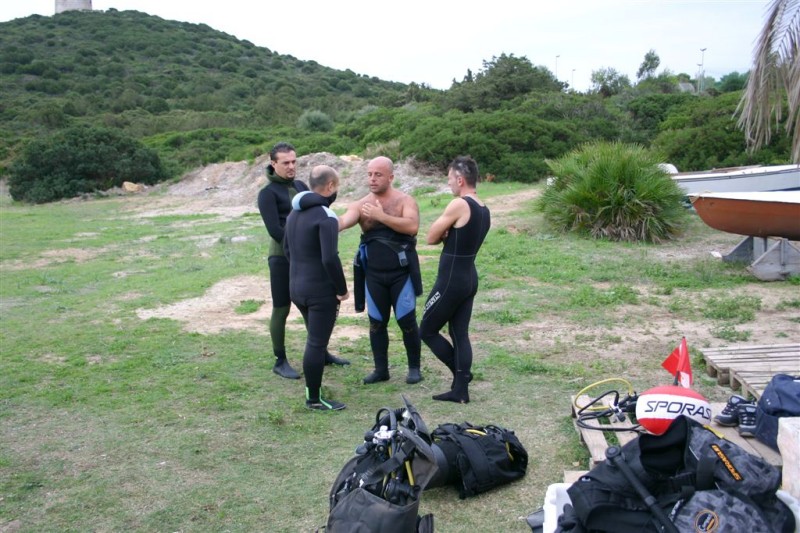
ESA Smile Diver: course for children over 12 years. It allows them to experience the thrill of the first breath underwater, in complete safety and under the close supervision of a dive professional. The program takes place under the water and comes with a very nice kit in which, in addition to the diploma and the Smile Card Diver, the little diver will find the ESA Smile Diver Story, cartoon designed to explain in simple and clear basic rules for a first approach with f
un and safe diving. The Smile Diver Card is valid for 21 days and during this period the diver can repeat similar experiences to those experienced during the program, always in the company of a scuba instructor.
Practical Information: minimum age 12 years, delivery kit with student manuals and handouts, 1 theory lesson, 1 lesson practice in confined water, 1 scuba diving.
****************
ESA Easy Dive: This is the first step towards diving, a new way to get to know other people and to achieve a big dream. It is the natural approach to diving, accompanied by a kit with diploma Easy Dive, the Easy Story Card and the Easy Dive Card. In 21 days of validity of the patent, the student will have the opportunity to continue to dive under the guide of an ESA scuba instructor. And, again, the ability to access courses ESA Open Water / ESA New Diver and receive credits for some of the exercises already carried.
Practical Information: minimum age 12 years, with delivery kits student manuals and handouts, 1 theory lesson, 1 lesson practice in confined water, 1 scuba diving.
****************
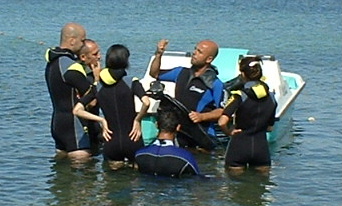
ESA New Diver (EN 14153-1): ideal course for those who want a gradual approach with the diving activities and for those who want to immerse themselves within the operating limits of this patent (maximum depth 10 meters and under the guide of a scuba instructor).
Practical Information: Minimum age 12 years for Junior divers, 15 years for others. Delivery kit with student manuals and handouts, 2 theory lessons, 2 practice lessons in confined water, 2 scuba diving.
****************
ESA Open Water Diver (EN 14153-2): is the course that offers the opportunity to acquire the knowledge and the practical skills to dive safely within the maximum depth of 18 meters, while respecting the buddy system.
Practical Information: Minimum age 12 years for Junior divers, 15 years for others. Delivery kit with student manuals and handouts, 5 theory lessons, 5 confined water practice lessons, 4 scuba diving.
****************
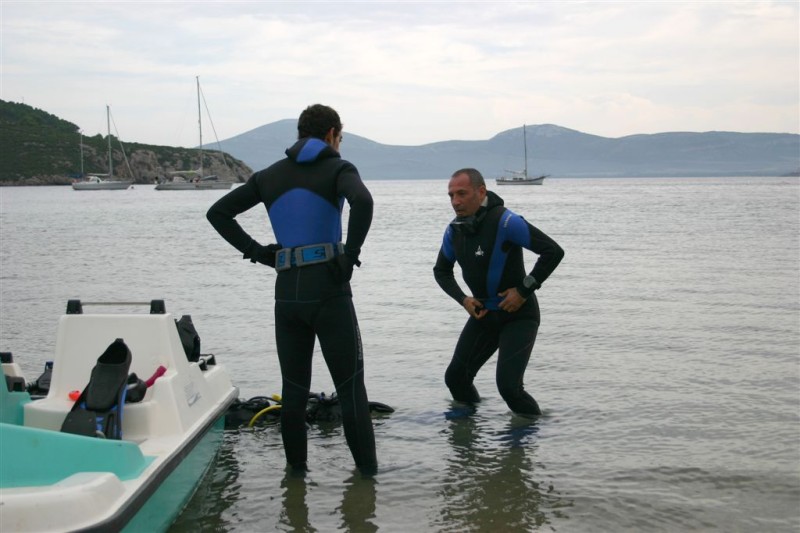
ESA Advanced Diver: allows you to learn the techniques and basic knowledge related to different areas of diving. During the course you will acquire information and is held practice of diving computers, underwater structure, navigation with compass and underwater orientation, deep diving and night (or naturalist dives).
To participate, you must already be in possession of the prior patent Open Water Diver / Junior OWD (Or equivalent).
Practical Information: Minimum age 12 years for Junior divers, 15 years for others. Delivery kit with student manuals and handouts, 5 theory lessons, 5 scuba diving.
****************
ESA Prevention & Rescue Diver: is the course that allows you to learn the fundamentals and techniques to prevent or cooperate in the rescue operations in the event of a diving accident. The course is divided into 6 theoretical presentations and 4 practical exercises. To enroll you must demonstrate that they have completed at least 20 dives and being in possession of the patent Esa Advanced Diver (or equivalent).
Practical Information: Minimum age 15 years. Delivery kit with student manuals and handouts, 6 theory lessons, scuba diving 4, 1 tutorial on the ground.
****************
ESA First Aid: the course provides the necessary information to help other people in the event of accident or injury on land or at sea. Through a simple but efficient program explains the key life-saving maneuvers to be taken in case of emergency.
Practical Information: minimum age 15 years, holds the patent Esa Advanced Diver (or equivalent), at least 30 logged dives on the log-book.
****************
ESA Specialty Diver: There are different areas of diving under which acquire a Specialty Diver certification. In these courses are thorough theoretical information and practical skills to plan and conduct dives into new environments and / or new techniques.
Practical Information: minimum age 15 years, holds the patent Esa Advanced Diver (or equivalent), at least 30 logged dives on the log-book.
****************
ESA Dive Leader: marks the entrance into professional diving. This course enables students to become leaders divers and transfers the skills needed to better manage the group during the dive.
The Green cave (Grotta verde)
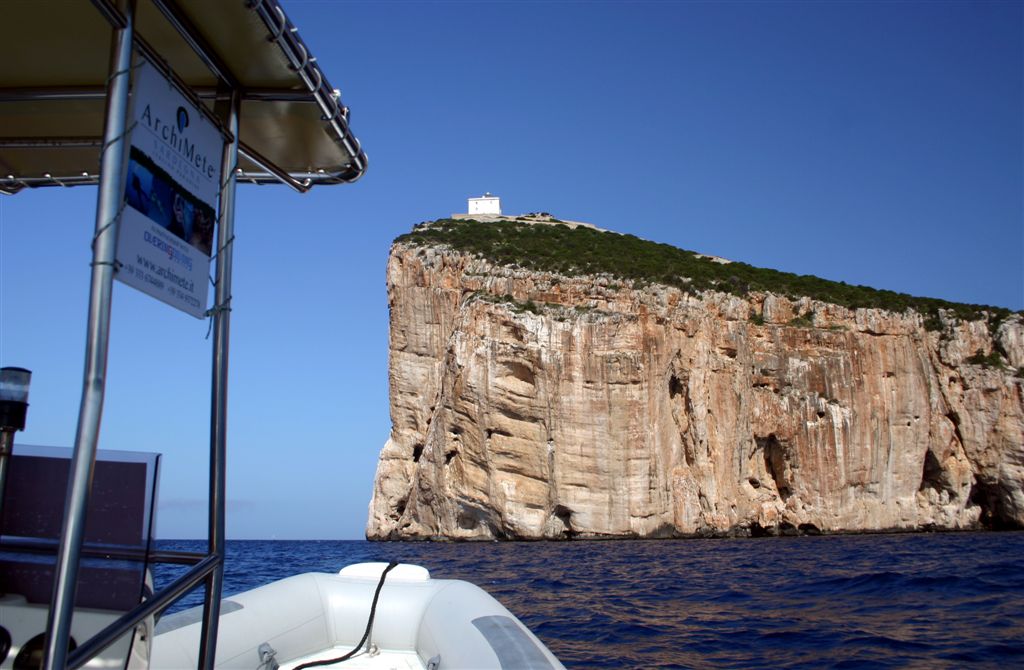 It is the second most important cave after Neptune, and is located on the eastern side of Capo Caccia. The scenic and huge entrance is at an altitude of around 80 metres; the entire cave is very interesting from a geological, naturalistic and archaeological standpoint, since in the prehistoric age —it is estimated at least 7000 years ago—the cave was already populated by hominids looking for a shelter. On the walls, graffiti and undisputed signs of a human presence are still recognizable; drawings that many still consider shrouded in mystery, and which remain without explication. The natural light which penetrates into the wide entrance hall, allows for the growth of green mosses and lichens on the rocks. This is the feature that gave name to this place.
It is the second most important cave after Neptune, and is located on the eastern side of Capo Caccia. The scenic and huge entrance is at an altitude of around 80 metres; the entire cave is very interesting from a geological, naturalistic and archaeological standpoint, since in the prehistoric age —it is estimated at least 7000 years ago—the cave was already populated by hominids looking for a shelter. On the walls, graffiti and undisputed signs of a human presence are still recognizable; drawings that many still consider shrouded in mystery, and which remain without explication. The natural light which penetrates into the wide entrance hall, allows for the growth of green mosses and lichens on the rocks. This is the feature that gave name to this place.
Imposing stalagmites, which are at least twenty metres high, are clearly visible, and continuing along towards the end of the cave, you reach the underwater part of it, where cave-divers discovered human remains, traces of ancient graves and even Neolithic vases.
The Grotta Verde (the Green Cave) was renamed as “cave of the altar”, because sailors built a small altar inside it dedicated to Saint Erasmo, their patron, back in the Fifteenth century.
The cave of Neptune (Grotta di Nettuno)
It is one of the most stunning places easily reachable by visitors and was discovered by chance by a local fisherman in the Eighteenth century. It is accessible both by sea (departures from the port of Alghero or from the boarding pier of Cala Dragunara, just after the enchanting Tramariglio bay), and by land, through the Escala del Cabirol (Stairs of Roebuck), with its 656 steps running along the cliff, and rising up from the sea, just in front of the Isola Foradada (Foradada Island). The inside is breathtaking and the tourist route winds its way through several rooms, with each one presenting different features: the Lamarmora Lake, an underground salt lake which is 9 metres deep, 100 metres long, and 25 metres wide; with a stalagmite column named Acquasantiera (Stoop) at its center. Another stalagmite rises from the bed of the lake and is called Albero di Natale (Christmas Tree). There are also the rooms of the Reggia (Palace), of the Rovine (Ruins), of the Organo (Organ), of Trine e Merletti (Lace and Lacemaking) and of the Tribuna della Musica (Tribune of the Music), which dominate the room of the Reggia (Palace).
The service of guided visit is available all year long. Visits to the site are possible from Easter to October, from 8 a.m. to 8 p.m. To reach the cave by land, once arrived at the square in Capo Caccia, just read all information on the visit procedures provided on the dedicated wallboard. Instead, to reach the cave by sea, take the motor ship which sails from the port in Alghero.
Further information are available at the tourist office in Alghero (tel. 0039.079.979054).
The necropolis of Anghelu Ruju
 Prenuragic area of extraordinary importance and the largest in Sardinia. It is located nearby I Piani, along the county road 42, not far from the airport of Alghero-Fertilia. It was discovered by chance in 1903, during the excavations for the building of a farmhouse. The finding of some human bones encouraged further excavations, until crockery, jewels and several hypogean graves were discovered. Over the years, a total of 38 Domus de Janas (Home of the Fairies) were discovered, along with underground graves dating back to three different historic periods: the civilization of Ozieri (3500 B.C.), of the bell-shaped vase (2000-1900 B.C.), and of Bonnanaro (1800 B.C.).
Prenuragic area of extraordinary importance and the largest in Sardinia. It is located nearby I Piani, along the county road 42, not far from the airport of Alghero-Fertilia. It was discovered by chance in 1903, during the excavations for the building of a farmhouse. The finding of some human bones encouraged further excavations, until crockery, jewels and several hypogean graves were discovered. Over the years, a total of 38 Domus de Janas (Home of the Fairies) were discovered, along with underground graves dating back to three different historic periods: the civilization of Ozieri (3500 B.C.), of the bell-shaped vase (2000-1900 B.C.), and of Bonnanaro (1800 B.C.).
The Nuraghe of Palmavera
Along the coastal road 127 Bis which connects Alghero to Capo Caccia, three and a half kilometres after Fertilia (at kilometre 32), we find the magnificent Nuragic complex of Palmavera. The main keep dates back to the Fifteenth-Fourteenth century B.C., and can be still visited in all its parts; including the large central room with a tholos cupola. Considered the structure of the complex, which was built at the foot of the Doglia Mountain, archaeologists presume that it was surrounded by cabins and refuges. The second cycle of life of the Nuraghe, started after the first half of the Ninth century B.C., when a second keep was added and the first one was covered with blocks of sandstone, a very common material in this area.
The visit is organized between the two towers, and it is also possible to visit the meeting cabin, where there are still a stone bench, a bath and the throne of the tribal chief. During the excavations, archaeologists found several artifacts, which today are mainly exhibited at the National Archaeological Museum “Sanna” in Sassari (at 64, via Roma; Phone nr. 0038.079.272203 – www.museosannasassari.it).
Other informations
Search
Category
Tag Cloud
Archive
Febbraio 2022 (1)
Gennaio 2018 (1)
Maggio 2016 (1)
Gennaio 2016 (1)
Giugno 2015 (1)
Marzo 2015 (1)
Febbraio 2015 (1)
Ottobre 2014 (1)
Maggio 2014 (1)
Gennaio 2014 (1)
Ottobre 2013 (1)
Giugno 2013 (1)
Aprile 2013 (1)
Marzo 2013 (1)
Dicembre 2012 (1)
Settembre 2012 (1)
Agosto 2012 (1)
Febbraio 2012 (1)
Gennaio 2012 (2)
Dicembre 2011 (3)
Novembre 2011 (2)
Archimete 2.0

Questo opera è distribuito con licenza Creative Commons Attribuzione - Non commerciale - Condividi allo stesso modo 3.0 Unported.












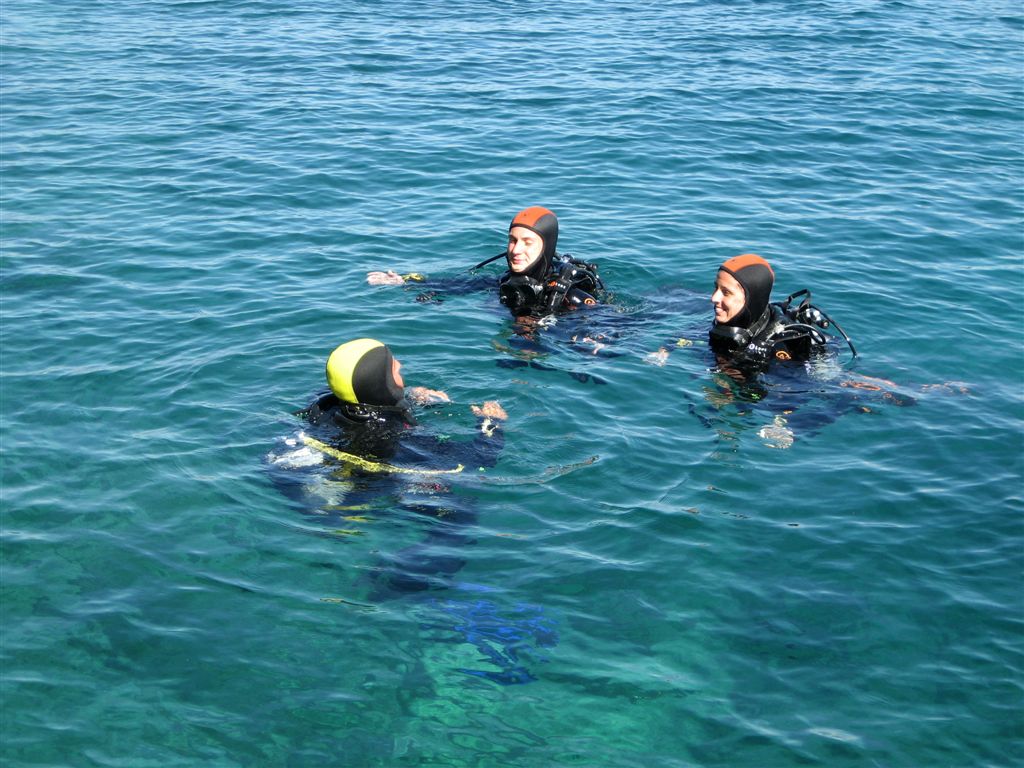

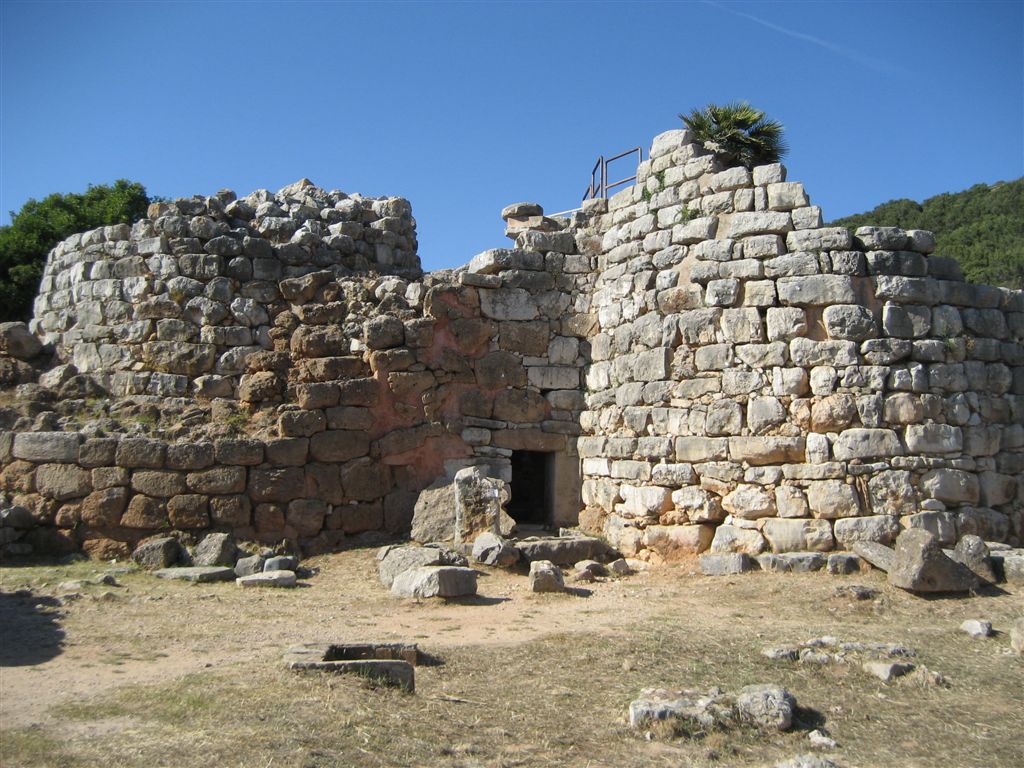
 RSS Blog
RSS Blog





